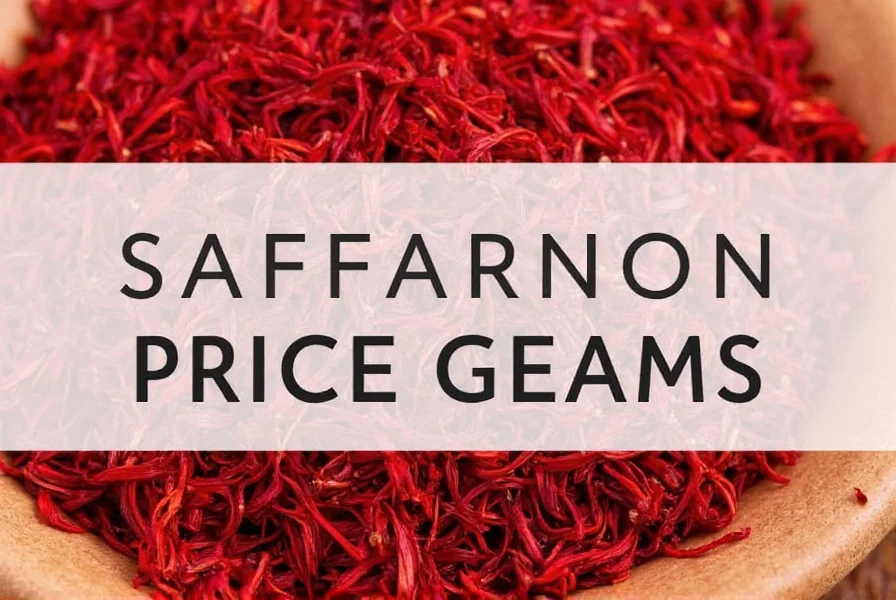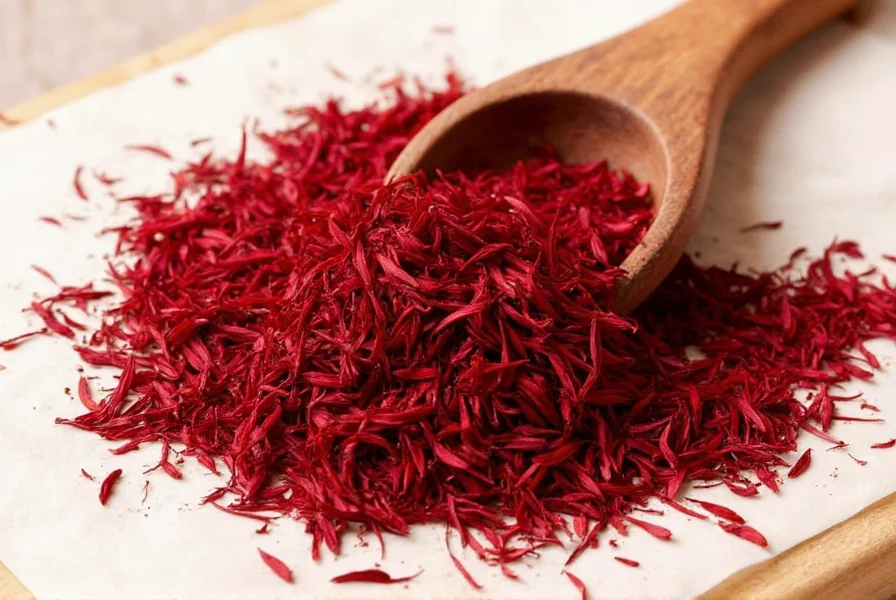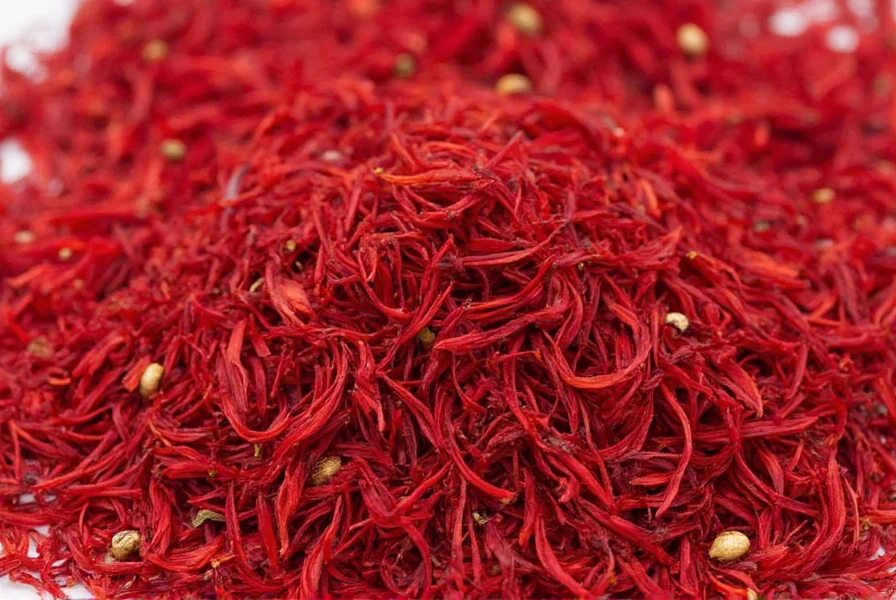As of 2024, high-quality saffron typically costs between $150 and $300 per ounce, with premium grades reaching $500+ per ounce. The current saffron price per ounce varies significantly based on quality grade, origin, purity, and whether you're purchasing retail or wholesale. Real saffron's high cost stems from its labor-intensive harvesting process—each flower produces only three stigmas, and it takes approximately 75,000 crocus flowers to yield one pound of saffron.
Understanding the true cost of saffron per ounce requires examining multiple factors that influence pricing in today's market. This valuable spice remains the world's most expensive by weight due to its meticulous harvesting requirements. When evaluating saffron pricing, it's essential to distinguish between authentic, high-grade saffron and lower-quality or adulterated products that may appear cheaper but deliver inferior flavor and color.
Why Saffron Commands Premium Pricing
The extraordinary cost of saffron per ounce directly correlates with its production process. Each Crocus sativus flower produces just three delicate red stigmas, which must be hand-picked at dawn when the flowers are still closed. Harvesters require approximately 40 hours of labor to collect 150,000 flowers yielding just one kilogram of dried saffron. This intensive manual process, combined with the narrow harvesting window of just 1-2 weeks annually, creates inherent supply constraints that drive the average cost of pure saffron per ounce significantly higher than other spices.
Key Factors Influencing Saffron Price Per Ounce
Several critical elements determine the final price you'll pay for saffron:
Quality Grade Classification
Saffron quality follows international ISO 3632 standards, which measure crocin (color), picrocrocin (taste), and safranal (aroma) content. Higher grades command premium pricing:
| ISO Quality Grade | Crocin Level | Current Price Per Ounce | Characteristics |
|---|---|---|---|
| Category I (Super Negin) | ≥190 | $250-$500+ | Long, deep red threads; strongest aroma; highest coloring power |
| Category II (Sargol) | 150-189 | $180-$280 | Red stigmas only; excellent quality; most common premium grade |
| Category III (Pushal) | 110-149 | $120-$180 | Includes some yellow styles; moderate quality |
| Category IV (Bunch) | <110 | $80-$140 | Whole stigmas with yellow styles; lowest quality grade |
Geographical Origin Impact
Iran produces approximately 90% of the world's saffron, with Spanish and Kashmiri varieties commanding premium pricing. Iranian saffron typically offers the best value for high-quality product, while Spanish saffron often carries a 20-30% premium due to branding, despite similar quality metrics. Authentic Kashmiri saffron, harvested in limited quantities, can reach $600+ per ounce due to its distinctive flavor profile and production challenges.
Retail vs. Wholesale Pricing Structures
Understanding the difference between retail and wholesale saffron pricing is crucial for determining fair value. Retail consumers typically pay 2-3 times the wholesale price due to packaging, marketing, and distribution costs. Serious buyers can achieve significant savings through wholesale purchases, though minimum order quantities usually apply:
- Retail pricing: $15-$30 per gram (equivalent to $425-$850 per ounce)
- Small wholesale (100g): $10-$20 per gram
- Large wholesale (1kg+): $6-$12 per gram
When calculating the true saffron cost per ounce, remember that 1 ounce equals 28.35 grams—a conversion many sellers obscure to make prices appear lower.
Identifying Fair Saffron Value
Determining whether you're getting fair value for saffron requires careful evaluation beyond just the price tag. The how much does real saffron cost question has several important considerations:
Red Flags of Substandard Saffron
Products priced below $100 per ounce typically indicate compromised quality. Warning signs include:
- Uniformly yellow threads (authentic saffron has red stigmas with orange tips)
- Excessive yellow styles attached (reduces potency)
- Chemical smell instead of honey-like aroma
- Water turning yellow immediately (real saffron releases color gradually)
- No ISO grading information provided
Value Assessment Techniques
To determine fair saffron pricing, perform these simple tests:
- The Water Test: Place a few threads in warm water—authentic saffron gradually releases golden color over 15-20 minutes
- The Rub Test: Rub threads between fingers—they should leave a yellow-orange stain, not red dye
- The Smell Test: Genuine saffron has a distinctive honey-like, hay-like aroma
- The Taste Test: High-quality saffron has a slightly bitter, floral taste
Maximizing Your Saffron Investment
Given the current saffron price per ounce, using this precious spice efficiently makes economic sense. Most recipes require only 0.05-0.1 grams per serving—meaning one ounce can flavor 280-560 dishes. Proper storage in an airtight container away from light preserves potency for 2-3 years, improving long-term value.
For home cooks, purchasing smaller quantities (1-5 grams) of high-grade saffron often represents better value than larger quantities of lower-grade product. The how to determine fair saffron price equation ultimately balances initial cost against flavor intensity and shelf life.

Where to Source Quality Saffron
Specialty spice retailers, reputable online merchants with transparent sourcing, and direct-from-producer platforms typically offer the best balance of quality and fair pricing. Avoid supermarkets and generic online marketplaces where adulteration risks are higher. When evaluating where to buy quality saffron at fair price, look for:
- Clear ISO grading information
- Origin documentation
- Recent harvest dates (within 12 months)
- Transparent pricing per gram
- Return policies for quality verification
Joining specialty food communities can provide valuable insights into current saffron price comparison 2024 trends and trusted suppliers. Many producers now offer sample sizes allowing cost-effective quality evaluation before larger purchases.

Conclusion
The cost of saffron per ounce reflects its extraordinary production requirements rather than artificial markup. While premium saffron represents a significant investment, its unparalleled flavor, color, and aroma justify the expense when used properly. Understanding the saffron pricing by quality grade system helps consumers make informed decisions that maximize value. By focusing on quality metrics rather than simply seeking the lowest price, buyers can ensure they receive genuine saffron that delivers exceptional culinary results per ounce.
Why does saffron cost more per ounce than gold?
Saffron costs more per ounce than gold due to its extremely labor-intensive harvesting process. Each crocus flower produces only three stigmas that must be hand-picked at dawn. It takes approximately 75,000 flowers to produce one pound of saffron, requiring 40+ hours of manual labor. Gold's value comes from scarcity, while saffron's price reflects the immense human effort required for its production.
How much saffron do I actually need for cooking?
Most recipes require only 0.05-0.1 grams of saffron per serving. A single ounce (28.35 grams) can flavor 280-560 dishes. Professional chefs often use a pinch (about 20 threads) for dishes serving 4-6 people. Properly stored saffron maintains potency for 2-3 years, making even premium-priced saffron economical when used correctly.
What's the difference between saffron price per ounce and per gram?
One ounce equals 28.35 grams, so saffron priced at $200 per ounce costs approximately $7.05 per gram. Many sellers quote prices per gram to make costs appear lower. When comparing saffron cost per ounce, always verify whether the seller is using avoirdupois ounces (28.35g) or troy ounces (31.1g), though culinary measurements almost always use avoirdupois.
Is expensive saffron worth the higher price?
Yes, premium saffron typically delivers 3-5 times more flavor and coloring power than lower grades, making it more economical per use. High-grade saffron (Category I) contains significantly higher concentrations of crocin, picrocrocin, and safranal—the compounds responsible for saffron's color, taste, and aroma. The initial investment pays off through superior culinary results and less product needed per recipe.
How can I verify if saffron is pure and not adulterated?
Perform these verification tests: 1) Water test—authentic saffron gradually releases golden color over 15-20 minutes 2) Rub test—threads should leave yellow-orange stain, not red dye 3) Smell test—should have distinctive honey-like aroma 4) Visual inspection—look for uniform red threads with minimal yellow styles. Reputable sellers provide ISO grading documentation and recent harvest dates.
Frequently Asked Questions
Why does saffron cost more per ounce than gold?
Saffron costs more per ounce than gold due to its extremely labor-intensive harvesting process. Each crocus flower produces only three stigmas that must be hand-picked at dawn. It takes approximately 75,000 flowers to produce one pound of saffron, requiring 40+ hours of manual labor. Gold's value comes from scarcity, while saffron's price reflects the immense human effort required for its production.
How much saffron do I actually need for cooking?
Most recipes require only 0.05-0.1 grams of saffron per serving. A single ounce (28.35 grams) can flavor 280-560 dishes. Professional chefs often use a pinch (about 20 threads) for dishes serving 4-6 people. Properly stored saffron maintains potency for 2-3 years, making even premium-priced saffron economical when used correctly.
What's the difference between saffron price per ounce and per gram?
One ounce equals 28.35 grams, so saffron priced at $200 per ounce costs approximately $7.05 per gram. Many sellers quote prices per gram to make costs appear lower. When comparing saffron cost per ounce, always verify whether the seller is using avoirdupois ounces (28.35g) or troy ounces (31.1g), though culinary measurements almost always use avoirdupois.
Is expensive saffron worth the higher price?
Yes, premium saffron typically delivers 3-5 times more flavor and coloring power than lower grades, making it more economical per use. High-grade saffron (Category I) contains significantly higher concentrations of crocin, picrocrocin, and safranal—the compounds responsible for saffron's color, taste, and aroma. The initial investment pays off through superior culinary results and less product needed per recipe.
How can I verify if saffron is pure and not adulterated?
Perform these verification tests: 1) Water test—authentic saffron gradually releases golden color over 15-20 minutes 2) Rub test—threads should leave yellow-orange stain, not red dye 3) Smell test—should have distinctive honey-like aroma 4) Visual inspection—look for uniform red threads with minimal yellow styles. Reputable sellers provide ISO grading documentation and recent harvest dates.











 浙公网安备
33010002000092号
浙公网安备
33010002000092号 浙B2-20120091-4
浙B2-20120091-4